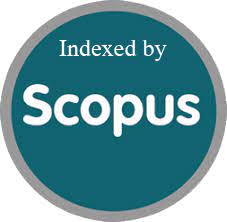Green Hrm And Employee Job Satisfaction: An Empirical Analysis In Sustainable Organizations.
DOI:
https://doi.org/10.52783/jns.v14.3488Keywords:
Green HRM, Employee Job Satisfaction, Sustainability, Green Recruitment, Green Training, Organizational Commitment, Environmental ResponsibilityAbstract
Green Human Resource Management (Green HRM) has emerged as a crucial approach in promoting sustainability within organizations by integrating environmentally friendly practices into HR policies. This study empirically examines the impact of Green HRM on employee job satisfaction in sustainable organizations by analyzing data from employees working in eco-conscious firms. The research explores how green recruitment, green training, green performance management, and green employee engagement contribute to improved job satisfaction. The findings indicate that organizations implementing Green HRM practices create a work environment that enhances employees’ sense of purpose, motivation, and organizational commitment toward sustainability.
Furthermore, the study highlights the role of perceived organizational support as a mediator in strengthening the relationship between Green HRM and job satisfaction. Employees who perceive their organization as actively engaged in environmental sustainability tend to experience higher job satisfaction due to the alignment of organizational values with their personal ethical beliefs. These findings offer valuable insights for HR professionals and organizational leaders, emphasizing the need for sustainability-driven HRM strategies to enhance employee engagement, retention, and overall performance. By embedding green policies into HR functions, businesses can foster both environmental responsibility and a more satisfied workforce.
Downloads
Metrics
Downloads
Published
How to Cite
Issue
Section
License

This work is licensed under a Creative Commons Attribution 4.0 International License.
You are free to:
- Share — copy and redistribute the material in any medium or format
- Adapt — remix, transform, and build upon the material for any purpose, even commercially.
Terms:
- Attribution — You must give appropriate credit, provide a link to the license, and indicate if changes were made. You may do so in any reasonable manner, but not in any way that suggests the licensor endorses you or your use.
- No additional restrictions — You may not apply legal terms or technological measures that legally restrict others from doing anything the license permits.










